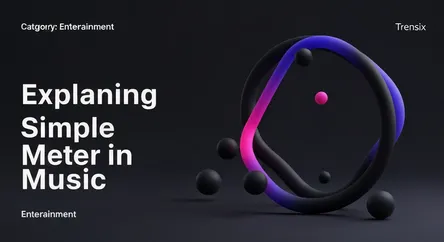Entertainment
Explaining Simple Meter in Music

What is simple meter? Learn how this fundamental concept in music theory shapes the rhythm of your favorite songs through common time signatures.
What Is It?
Simple meter is a fundamental concept in music theory that describes how rhythmic pulses are organized within a piece of music. In simple meter, each primary beat is divided into two equal, shorter notes (subdivisions). This creates a straightforward, march-like or waltz-like feel. The most common simple meter time signatures are 2/4 (simple duple), 3/4 (simple triple), and 4/4 (simple quadruple), where the top number indicates the number of beats per measure and the bottom number indicates that a quarter note gets one beat.
Why Is It Trending?
Simple meter isn't a new trend but a foundational element that constantly trends due to its prevalence in popular music. From rock and pop to folk and classical, its predictable and easy-to-follow pulse makes it incredibly accessible. As more people learn to play instruments or produce music using digital software, understanding simple meter is a crucial first step. Its dominance in chart-topping hits ensures it remains a perpetually relevant topic for music students, educators, and enthusiasts.
How Does It Affect People?
Simple meter provides a stable and intuitive rhythmic framework that most listeners can easily grasp and feel. It's the reason you can effortlessly clap along to a song or tap your foot in time. This rhythmic clarity creates a sense of order and predictability, making the music feel grounded and satisfying. For dancers, it provides a clear pulse to move to. Ultimately, simple meter's direct and uncomplicated feel is a key ingredient in making music universally catchy and enjoyable.